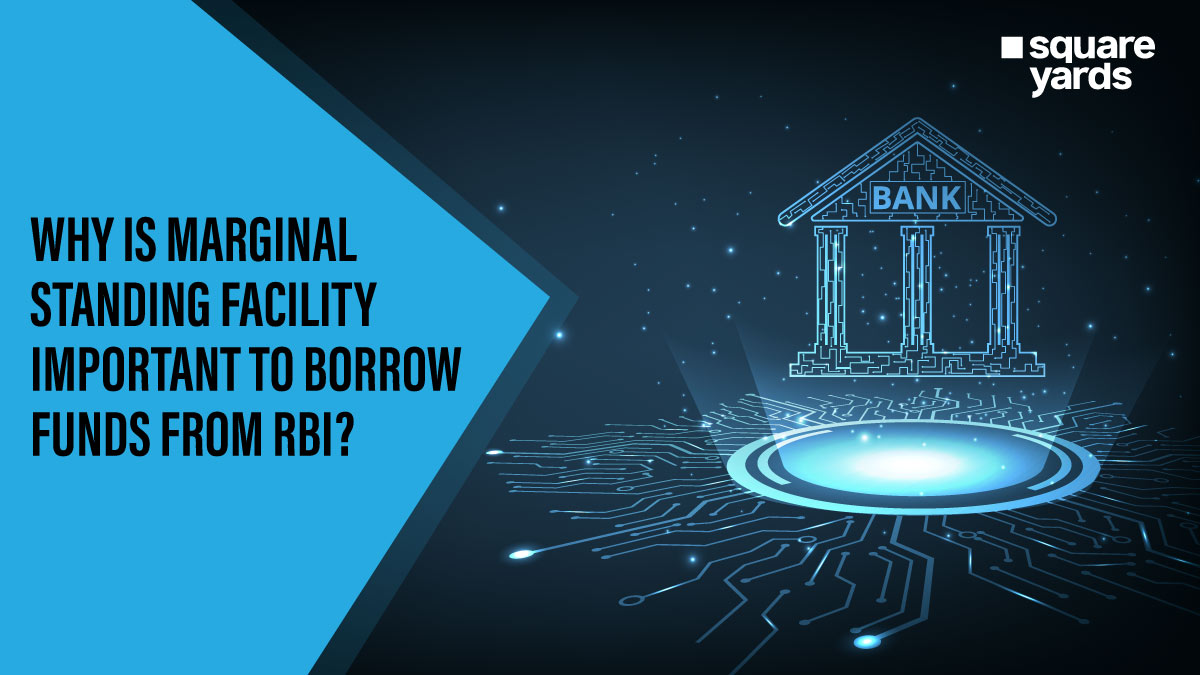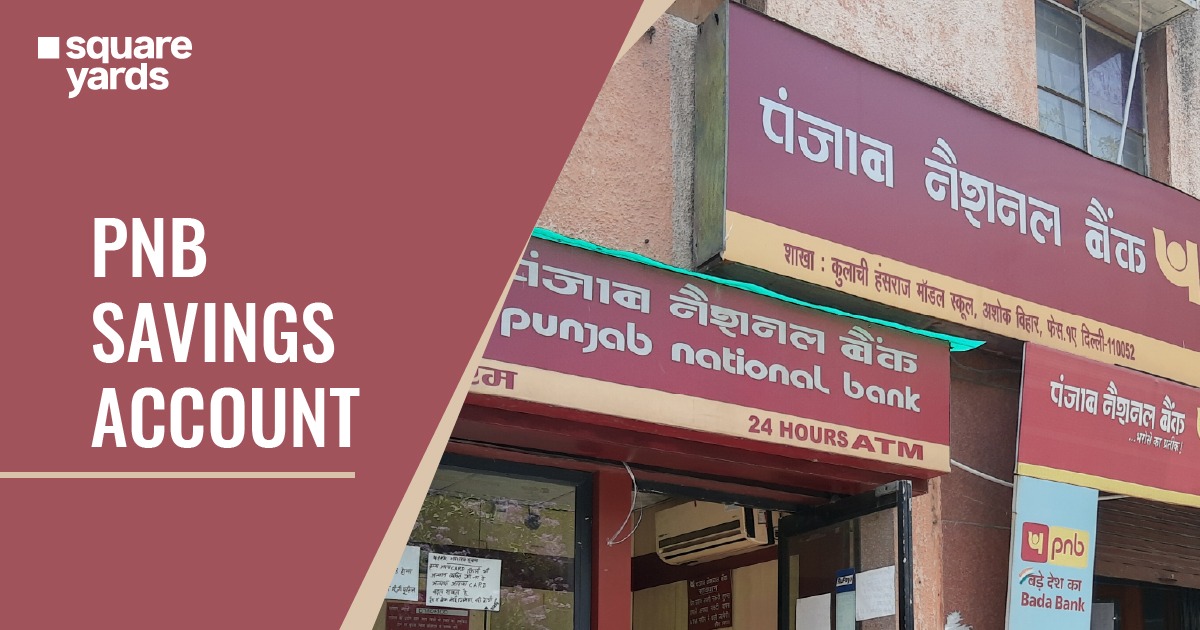Apart from Repo Rate, there is another facility rate that is applicable on lending funds from the Reserve Bank of India (RBI). This is known as the Marginal Standing Facility rate. Unlike the Repo, this rate is not applicable to all commercial banks when borrowing. The MSF is only applied to a few scheduled banks chosen by RBI.
Understand what MSF is and how it is applied by RBI and more about it in detail. Get to know all the facts and objectives of the facility in this piece.
Table of contents
- What is a Marginal Standing Facility (MSF)?
- When MSF was Introduced and Objectives of RBI’s Facility
- What is Marginal Standing Facility (MSF) Rate?
- Why is Marginal Standing Facility (MSF) Rate Important?
- Facts about Marginal Standing Facility (MSF)
- What is the Process of Borrowing Funds under Marginal Standing Facility (MSF)?
- Criteria to Borrow through Marginal Standing Facility
- Difference Between MSF and Repo Rate
- What is the Current Rate of Marginal Standing Facility (MSF)?
- Key Terms Related to Marginal Standing Facility (MSF)
- FAQ’s about Marginal Standing Facility (MSF)
What is a Marginal Standing Facility (MSF)?
Marginal Standing Facility, also known as MSF, makes it easy for banking institutions to borrow funds from the Reserve Bank of India (RBI). The borrowing is done by these banks in a situation where the liquidity has dried up. MSF is a short-term fund borrowing facility that helps the scheduled banks in India borrow money overnight from the Central Bank of India when they are facing a serious shortage of funds. These funds are the government securities preserved by the RBI for such situations.
The liquidity paucity is faced by the scheduled banks when there’s a gap created because of the loan portfolio and deposit mismatch. However, these shortfalls are not long-lasting and the banks can get assistance from RBI for the same.
When MSF was Introduced and Objectives of RBI’s Facility
The Reserve Bank of India (RBI) introduced a marginal standing facility in 2011-12 under their Monetary Policy. After the initiative, MSF got its first introduction in June 2011. This new liquidity facility by the Indian central bank was introduced to make lending rates stable between banking institutions. As a result, it also aims to promote the smooth transmission of finance in the banking system.
The introduction of the liquidity facility helped the RBI to gain control over the money supply in the financial system of the country.
What is Marginal Standing Facility (MSF) Rate?
The Marginal Standing Facility rate, also known as the MSF rate, is the rate at which the scheduled banks borrow funds from RBI during an acute shortage. If the MSF rate increases, then the cost of borrowing will also increase which can lead to a shortage of funds supply in the Indian market and vice versa.
When MSF was first introduced in 2011, the marginal standing facility rate was 100 basis points higher than that of the Repo rate. Therefore, by paying this MSF rate, the banking institutions can avail 1% of the net demand along with time liabilities (also known as NDTL). It refers to the total liabilities and deposits made by the banks related to borrowing done by other financial institutions.
Later on, in July 2013, the Reserve Bank of India made changes to the marginal standing facility rate again. This time the new rate was 300 basis points higher than the Repo rate for catching up to the falling value of the Rupee. After much consideration, the RBI brought back the MSF rate to 50 basis points again. The new rate made it easy for the banking institutions to get funds from the central bank in tough situations.
According to the new amendments made to the Monetary Policy of the RBI on October 7, 2017, the MSF rate has been fixed. The current MSF rate is 6.25% which is 25 basis points higher than the current Repo rate (5.90%).
Why is Marginal Standing Facility Rate Important?
The Marginal Standing Facility rate is controlled by the Reserve Bank of India. Therefore, the institution can change the rate to maintain stability in the Indian economy. This rate is helpful in controlling the disparity in short-term liability of assets more adequately. The banks can take collateral under the MSF rate as government securities to the RBI. This MSF rate can also change overnight depending on the rules and regulations of the RBI.
Facts about Marginal Standing Facility (MSF)
MSF are an important component when a banking institution, corporate entity, or individual has to borrow funds from the RBI. However, there are a few facts that one should be aware of about the facility. Some of these facts are as follows:
- It was first introduced in 2011 – 2012.
- The facility was launched by the Reserve Bank of India (RBI).
- It is a part of the Monetary Policy of the institution.
- The facility came into effect on May 9, 2011.
- MSF was first launched in June 2011.
- Rs. 1 billion have already been borrowed in the first year (2011) by banking institutions under MSF.
What is the Process of Borrowing Funds under Marginal Standing Facility (MSF)?
It is crucial to follow a few procedures for banks to avail funds using MSF. The process for the same is as follows:
- The banking institutions are required to submit their MSF request to the Negotiated Dealing System (NDS).
- The request should be in multiples of crores. The minimum requesting amount limit is Rs. 1 crore.
- The bank that is making requests should do it after pledging against the Indian Government’s approved securities.
- After the securities and requests have been accepted, the RBI will deposit the accepted securities in the RC Subsidiary General Ledger (RC SGL) bank’s account.
- Lastly, the funds by the central bank will be disbursed into the bank’s current account.
Don’t miss it
| Repo Rate | What is Current Repo Rate? |
| Reverse Repo Rate | What is Reverse Repo Rate? |
| Monetary Policy | What is Monetary Policy & Benefits |
| Repo Rate and EMI | Difference Between Repo Rate and EMI |
| Bank Rate | What are Bank Rate? |
Criteria to Borrow through Marginal Standing Facility
Only after following the set criteria the banking institutions can borrow funds from the RBI. Here are the few criteria set by the central bank for the scheduled banks:
- Funds can only be borrowed using a marginal standing facility from the RBI’s headquarters located in Mumbai. Banks can borrow funds on all working days of RBI between 3:30 P.M. to 4:30 P.M., except Saturday.
- The minimum accessible funding amount by RBI is Rs. 1 crore and the amount can be availed only in multiples of crores.
- Only scheduled commercial financial institutions can apply for this RBI’s liquidity funding facility.
- The application for special services needs to be submitted electronically.
Difference Between MSF and Repo Rate
Both Repo Rate and Marginal Standing Facility are different from each other. The differences between the two are as follows:
| Marginal Standing Facility (MSF) | Repo Rate |
| It is the rate at which the Reserve Bank of India provides funds to the banks when they are facing acute inter-bank liquidity shortage. | It is the rate at which commercial banks can avail funds from RBI when they are short on financial conditions. |
| MSF rate is applicable when the RBI lends funds to the selected scheduled banks. | The Repo rate is applicable when the RBI lends funds to commercial banks. |
| Banks can use Statutory Liquidity Ration (SLR) securities when lending with an MSF. | SLRs are not required to be taken care of in case of funding by RBI at the Repo rate. |
| The current MSF rate is 6.25% which is 25 basis points higher than the Repo rate. | The current Repo rate is 6% which is 25 basis points lower than the MSF. |
| The MSF rate is applied when banks lend funds from RBI against their extra and preserved government securities. | The Repo rate is applicable in the case when banks sell their extra securities along with a repurchase agreement. |
What is the Current Rate of Marginal Standing Facility?
The current marginal standing facility rate is 6.25% per annum which is 25 basis points higher than the Repo rate. In simple terms, if a scheduled commercial bank needs funds from RBI, it can sell their preserved government securities at the rate of 6.25% to the central bank when they cannot avail funds under the repo rate.
Key Terms Related to Marginal Standing Facility
There are a few terms that you should know in order to understand the Marginal Standing Facility better. Some of these terms are mentioned below.
Repo Rate
It refers to the rate at which the Reserve Bank of India lends money to the other commercial banks of the country. This rate is been used to regulate the liquidity in India’s economy for the banking institution. In banking terms, Repo Rate is related to the purpose of the ‘repurchase option’/’repurchase agreement’.
Furthermore, if the Repo rate is high, then the borrowing cost stick will also be high and vice versa. It is because when this rate rises, the cost of borrowing for the banks also increases. Then, this rise is passed onto the account holder which results in higher interest on the loan and deposits.
NDTL
NDTL is the abbreviated form of Net Demand and Time Liabilities. NDTL is of the public that is being held by the bank which is further held by another bank. The demand deposits in banks include all the respective liabilities which the banking institution is required to pay on the demands.
Funds borrowed from the Reserve Bank of India (RBI) are excluded from NDTL calculations.
SLR
Statutory Liquidity Ration, also known as SLR, refers to the minimum deposit percentage that the banking institution is required to maintain in their account. This liquidity can be in the form of gold, liquid cash, or other suggested forms by the central financial authorities.
The SLR is being used by the government to regulate liquidy and inflation situations. Increasing the percentage of SLR will control the inflation in the particular economy whereas decreasing the same will promote the growth of the particular economy.
Bank Rate
The bank rate refers to the rate that commercial banks have to pay when borrowing money from a central bank like the Reserve Bank of India. Based on this rate, the central bank will lend money to commercial banks without asking for any security or collateral.
The Monetary Policy Committee controls the bank rate and is required to meet a minimum of four times in a particular year for deciding the same.
Reverse Repo Rate
Reverse Repo Rate refers to the rate at which the central bank of any country borrows funds from commercial banking institutions. Commercial banks should be in their country for lending. It is part of the monetary policy tool to maintain the flow of funds inside the country.
FAQ’s about Marginal Standing Facility (MSF)
Q1. What is the marginal standing facility rate of RBI?
Currently, the rate of the marginal standing facility of RBI for borrowing funds is 6.25% per annum. This range is 0.25% higher than that of the Repo rate.
Q2. Why is MSF higher than the repo rate?
Since MSF provides a greater liquidity cushion, it is higher than the repo rate. Also, the MSF is calculated as 25 basis points higher than the repo rate which when calculated in percentage is 0.25%. The higher will be the marginal standing facility, the higher will be the rate of borrowing for banks, individuals and corporate borrowers.
Q2. Why do banks need MSF?
Marginal Standing Facility, MSF, is the window for the banking institution to borrow funds from the Reserve Bank of India (RBI) in emergency situations when the liquidity of inter-banking fully dries up.
Q4. Can cooperative banks use MSF?
The cooperative banks do not have the right to avail the services under marginal standing facility according to the rules and guidelines of the Reserve Bank of India (RBI).


















































